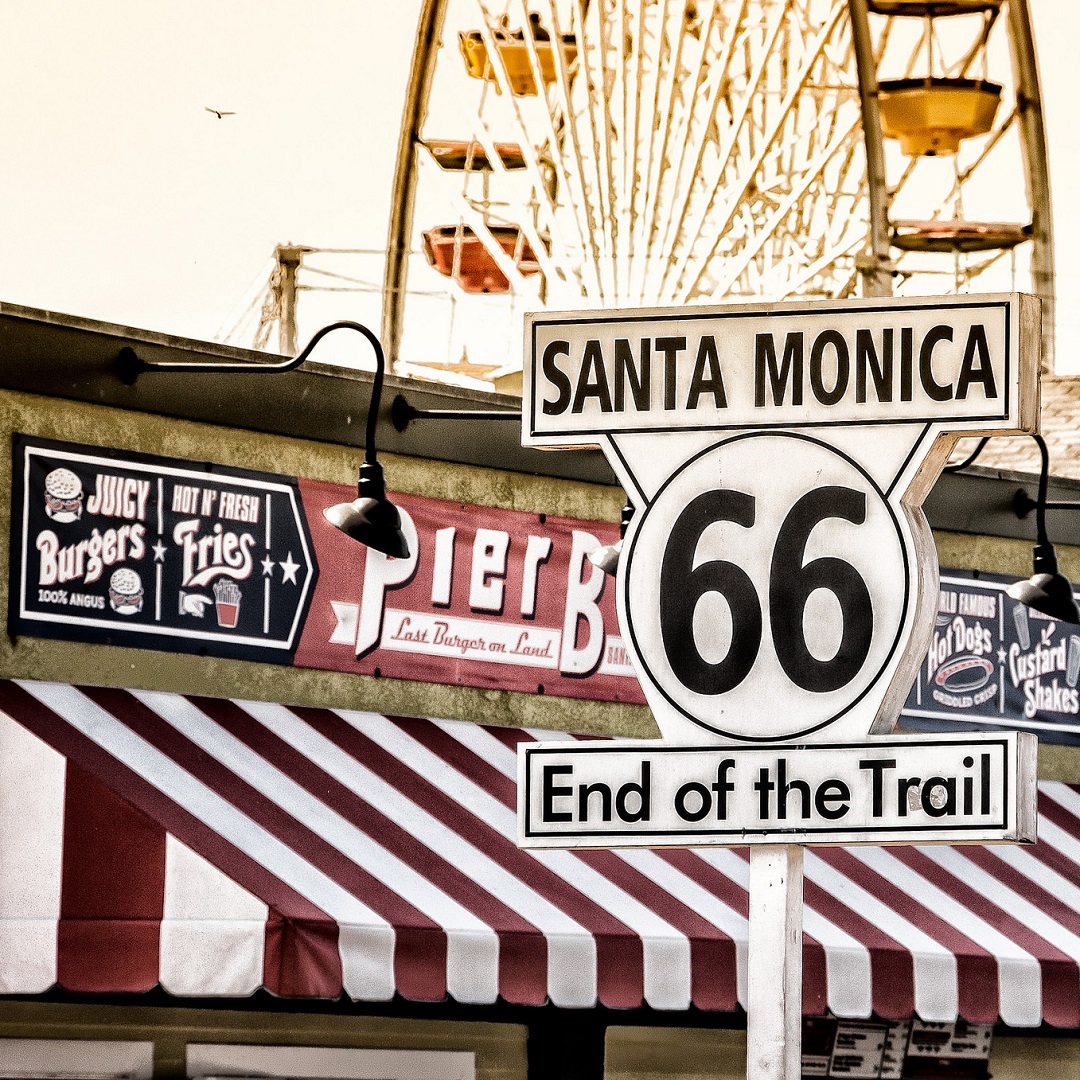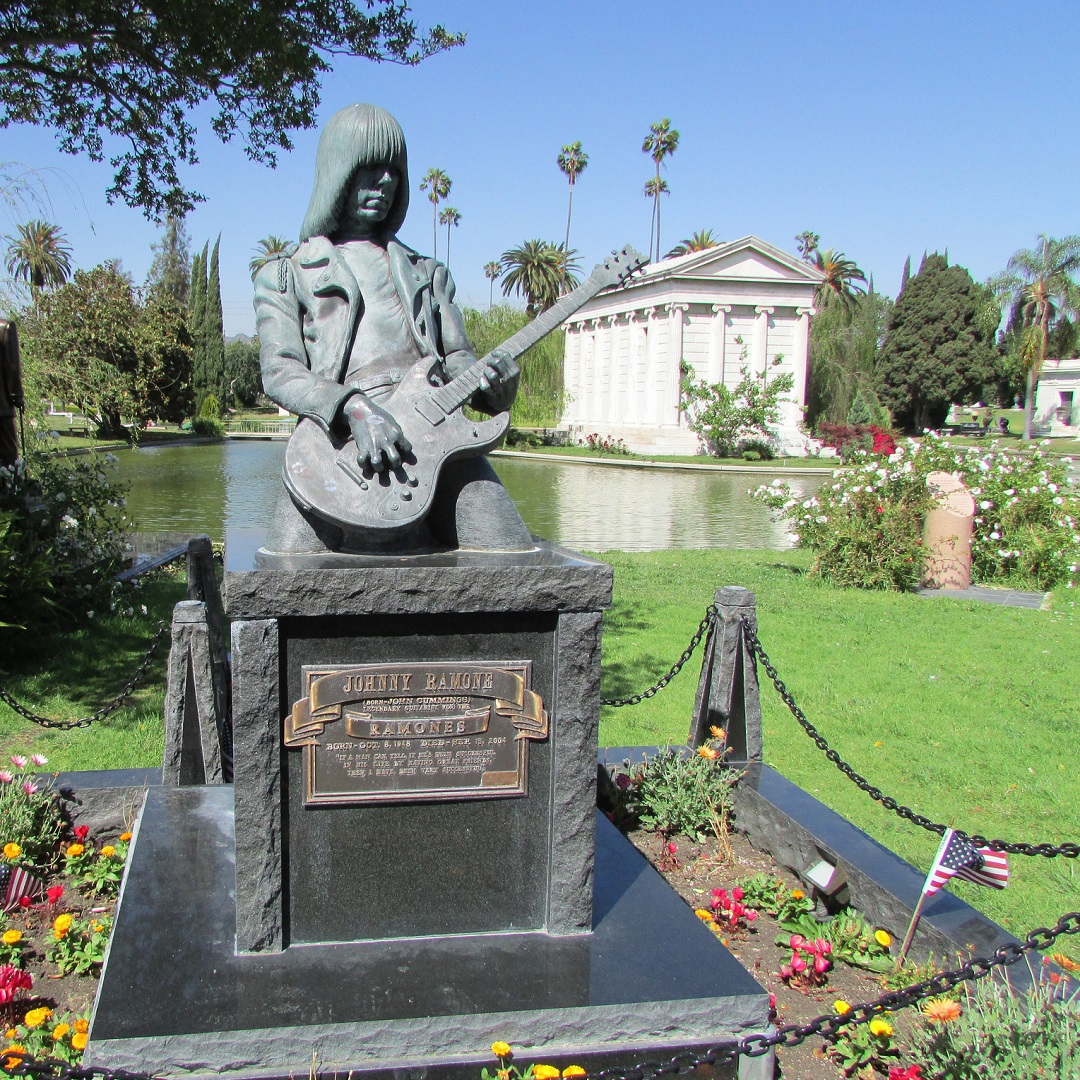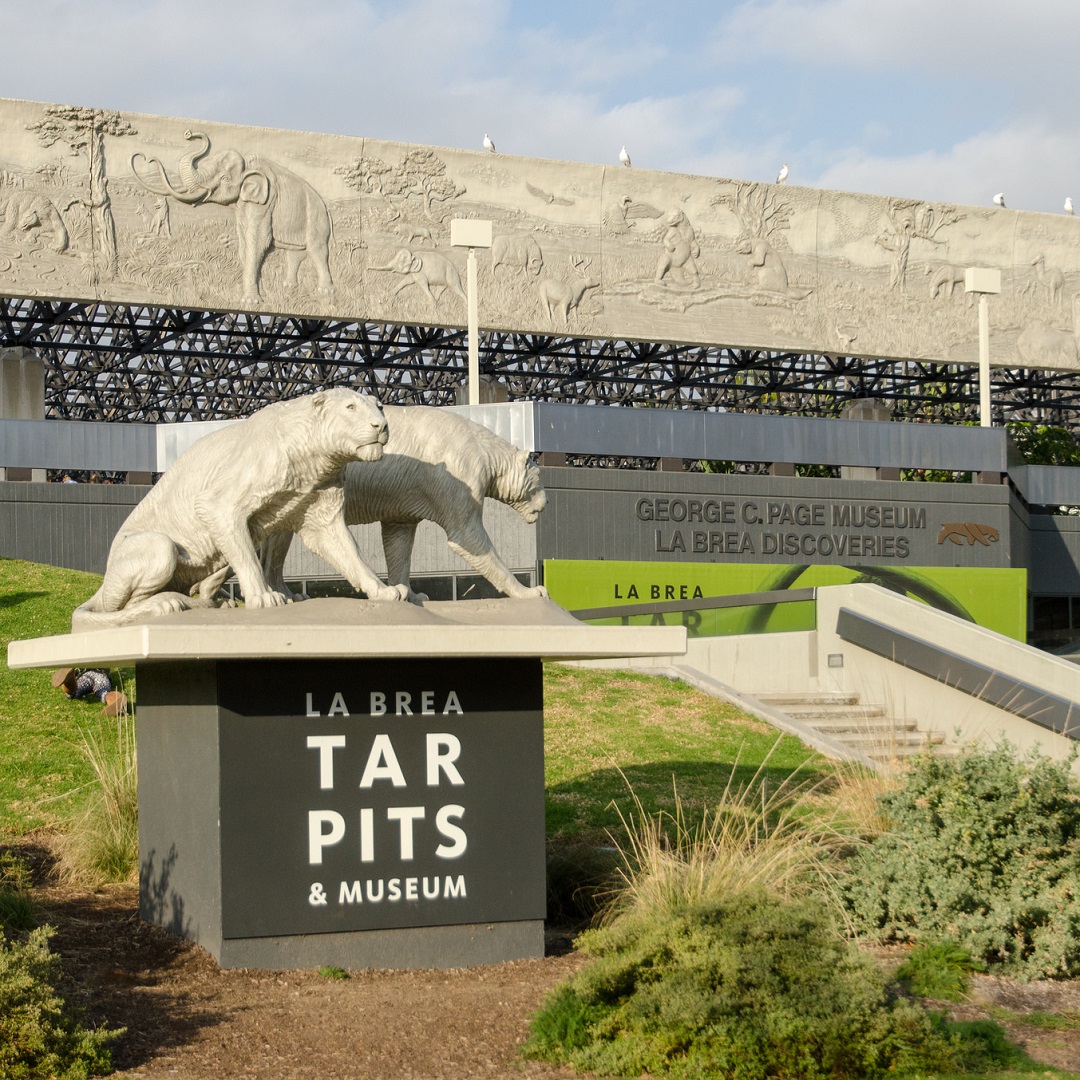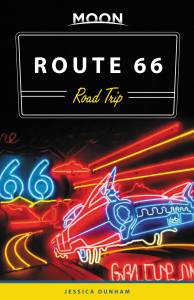Route 66 Sights in Downtown Los Angeles
Route 66 sights in downtown Los Angeles begin at the first terminus (S. Broadway and 7th Sts.). The city’s a huge metropolis of more than 10 million people living within 400 square miles, and the sights are just as plentiful and packed together. Apart from the traffic and the celebrities, the City of Angels is one of the most diverse places in the United States, with a multicultural synthesis of food, art, and architecture.
The major freeways into Los Angeles are I-405 and I-5, both of which run north-south, while the I-10 freeway, another major artery, runs east-west. Traffic is practically unavoidable in Los Angeles, but life will be easier if you stay off the freeways 7am-10am and 3pm-7pm Monday-Friday.
Classic LA Drives
Mulholland Drive winds 24 miles through the Santa Monica Mountains along the crest of the Hollywood Hills with amazing views. Jack Nicholson and Warren Beatty live on this iconic, classic road, which inspired the 2001 David Lynch film of the same name. From U.S. 101, take the Cahuenga exit and follow the signs. Drive west until you get to I-405 (San Diego Freeway) and go south to head back to Los Angeles. Allow at least an hour for the drive.
The Pacific Coast Highway (locals call it PCH) is a signature LA drive that winds up and down the Pacific coastline with soul-stirring ocean views. Take Santa Monica Boulevard (Route 66) to Ocean Avenue, turn right (north), and merge left onto the Pacific Coast Highway (SR-1). If you’re short on time, Malibu is a good place to stop for lunch and turn around.

Sights
Bradbury Building
The first Route 66 terminus is located in a historic theater district with beautiful old movie palaces that span about seven blocks along South Broadway, between 2nd Street and 9th Street. Take the time to check out the Bradbury Building (304 S. Broadway, Downtown, 213/626-1893). It may not look like much from the outside, but inside is a grand five-story cathedral of wrought iron, glass, and light. The Bradbury has been featured in numerous sci-fi and noir films, most notably in the climactic scene in Blade Runner.
Grand Central Market
Grand Central Market (317 S. Broadway, 213/624-2378), located across the street from the Bradbury Building, is a Downtown landmark that celebrates the cultural cornucopia of Los Angeles. Open since 1917, it has 30,000 square feet of over 90 vendors, including grocers, butchers, baked goods, coffee, cheese, delis, and fishmongers.
El Pueblo de Los Angeles
El Pueblo de Los Angeles (125 Paseo de la Plaza and Cesar Chavez Blvd., Downtown) is a 44-acre district that celebrates the rich history, culture, and ethnicity that makes LA different from any other place on the planet. It’s located in the oldest section of Los Angeles and consists of 27 historic buildings, including the Avila Adobe (10 Olvera St.). The walls are almost three-feet thick, and it’s the oldest surviving residence in Los Angeles. Also at the Pueblo are two outdoor plazas, museums, and a Mexican marketplace.
Union Station
The stunning and dramatic Union Station (800 N. Alameda St., near U.S. 101, Downtown, 213/485-6855) is the largest passenger terminal in the western United States and combines Dutch Colonial Revival, Mission Revival, and Streamline Moderne architecture. Walking through Union Station feels like stepping back into a noir film.
Velveteria
Tucked away on a side street in Chinatown is the quirky and surreal Velveteria: The Museum of Velvet Art (711 New High St., 503/309-9299, 11am-6pm Thurs.-Sun., $10). On exhibit are more than 400 awesomely weird velvet paintings, trinkets, and oddities of pop icons—from Elvis to TuPac. The Velveteria is just north of downtown. From Route 66 (Broadway St.), head east on Ord Street. After one block, take a left on New High Street.
Hollywood Forever Cemetery

Skip the throngs of tourists and panhandlers on the Hollywood Walk of Fame and celebrate the celebrities that have passed on at the Hollywood Forever Cemetery (6000 Santa Monica Blvd., Hollywood, 323/469-1181). Tour the 62 acres of manicured lawns, complete with peacocks and swans, and discover the final resting place of classic stars like Douglas Fairbanks and rockers like Johnny Ramone.
To reach Hollywood from downtown, hop on U.S. 101 north near Union Station and drive (or crawl) 4.5 miles north to the Santa Monica Boulevard exit. Head west on Santa Monica Boulevard, and the cemetery will be on the left.
Original Farmer’s Market
To really step back in time, stroll through the Original Farmer’s Market (6333 W. 3rd St., 323/933-9211 or 866/993-9211, 9am-9pm Mon.-Fri., 9am-8pm Sat., 10am-7pm Sun.), with more than 100 vendors from all over the world, including Brazilian, French, and Southern food stands.
In the 1880s, Arthur Gilmore settled the land at 3rd and Fairfax and ran a fairly successful dairy farm. Gilmore and his son struck oil in 1900 and his business, the Gilmore Oil Company, had a sly marketing technique of selling their trademark blue-green gas. By 1934, drilling regulations changed and they had to move. Gilmore decided to turn the property into a place where farmers could sell produce to local housewives. Eighteen farmers set up shop and it became a huge success. The Gilmore Family still owns and operates the market today.
Magee’s Kitchen (stall 624, 323/938-4127) became the first Farmers Market restaurant after Blanche Magee started serving lunch to the farmers in 1917. It’s still here today and run by the same Magee family. Patsy d’Amore’s Pizza (stall 448, 323/9384938) has been here for 66 years and was the first operation to bring pizza to Los Angeles. Frank Sinatra, Nat King Cole and Dean Martin all loved this place. The fresh tomato, garlic, and basil pizza is fabulous.
Kip’s Toyland (stall 720, 323/939-8334) is the oldest toy store in LA. It’s been here since 1956 and sells vintage toys like Mr. Potato Head, Life, and Operation. The Barbershop Club (stall 116, 323/931-9916) does things the old-fashioned way. Owner Woody Lavell is a 3rd-generation barber and his staff is at the top of their craft, cutting in fades that look airbrushed. Before heading out stock up on Bob’s Coffee & Donuts (stall 450, 323/933-8929), a delicious, well-deserved treat in case you get stuck in traffic.
To reach the Farmer’s Market, continue west on Santa Monica Boulevard into West Hollywood. Turn left onto North Fairfax Avenue and continue to West 3rd Street.
Los Angeles County Museum of Art
The locals call it LACMA, and the Los Angeles County Museum of Art (5905 Wilshire Blvd., 323/857-6000, 11am-5pm Mon.-Tues. and Thurs., 11am-8pm Fri., 10am-7pm Sat.-Sun., $15) features some of the most compelling modern art exhibitions in the country. Outside, walk through Chris Burden’s Urban Light installation, which is made up of more than 200 cast iron antique street lamps.
LACMA is located eight blocks south of the Farmer’s Market off South Fairfax Avenue. Turn right on West 6th Street to access the Pritzker parking garage ($12, free after 7pm).
La Brea Tar Pits
Located right next door to the Los Angeles County Museum of Art, The La Brea Tar Pits (5801 Wilshire Blvd., 323/857-6300, free) is perfect for kids and the science geek in everyone. There are more than 5.5 million fossils in the collection from the most recent ice age, including a full skeleton of a mastodon. It’s the only active urban paleontology excavation site in the country. Watch the excavators unearth fossils in a pit that’s been active for more than 100 years.

Petersen Automotive Museum
At the Petersen Automotive Museum (6060 Wilshire Blvd., 323/930-2277, 10am-6pm daily), the history of the automobile is explored over four floors and more than 300,000 square feet of space. Historic and current examples of auto design and technology are features in rotating galleries and exhibits that display more than 150 rare and classic cars, trucks, race cars, concept cars, movie cars, and motorcycles.
To reach the museum, continue south on South Fairfax Avenue to Wilshire Boulevard.
Stahl House
Located high in the Hollywood hills, mid-century modern fanatics will love the Stahl House (1635 Woods Dr., Hollywood, 323/744-1635, $35-60), one of the most celebrated homes in the United States, made famous by Julius Shulman’s photographs. The sleek modern marvel offers breathtaking views of Los Angeles. Viewings are available by reservation only and must be booked in advance. Parking restrictions apply.
California Science Center
California Science Center (700 Exposition Park Dr., 323/724-3623, 10am-5pm daily, free) is one of the largest hands-on science museums on the West Coast. It features innovative, interactive exhibits, live demonstrations, and films in over 400,000 square feet of exhibitions that examine every type of life, from single-cell bacteria to the 100-trillion-cell human being. And the best part? Admission is free!
From downtown LA, head south on I-110. In less than 3 miles, take the Exposition Boulevard exit. Make a soft left at the bottom of the ramp onto Flower Street. Turn left (south) on Figueroa Street. The museum complex will be on the right.

